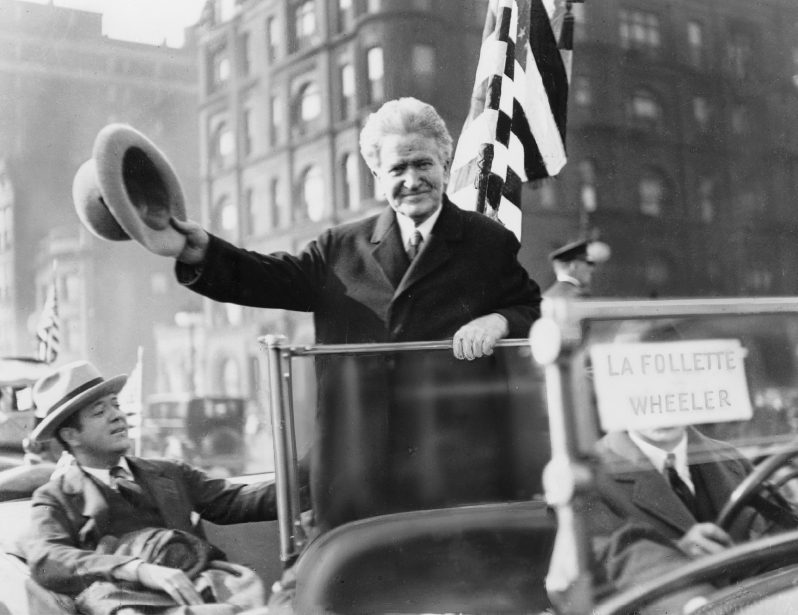Exploring American Histories: Printed Page 673
Exploring American Histories, Value Edition: Printed Page 559
Where Have All the Progressives Gone?
The Democrats and Republicans were not the only parties that attracted voters in the 1920s. Some voters continued to cast their ballot for the Socialist Party. Others took the opportunity to voice their disapproval of Republican policies by voting for the remaining progressive candidates. Progressives did manage to hold on to seats in Congress, and in 1921 they helped pass the Shepherd-Towner Act, which appropriated federal funds to establish maternal and child centers. But their efforts to restrict the power of the Supreme Court, reduce tax cuts for the wealthy, nationalize railroads, and extend agricultural relief to farmers were rebuffed by conservative legislative majorities. In 1924 reformers nominated Senator Robert M. La Follette of Wisconsin to run for president on a revived Progressive Party ticket, but he came in a distant third and won only five million popular votes and the electoral votes of his home state. The Progressive Party collapsed soon after La Follette died in 1925.
Still, progressivism managed to stay alive on the local and state levels. Gifford Pinchot, a Roosevelt ally and a champion of conservation, twice won election as governor of Pennsylvania starting in 1922. Social workers continued their efforts to alleviate urban poverty and lobby for government assistance to the poor. Even at the national level, women in the Children’s Bureau maintained the progressive legacy by supporting assistance to families and devising social welfare proposals. Progressivism did not disappear during the 1920s, but it did fight an uphill and often losing battle during an age of conservative political ascendancy. Its weakness contributed to the government’s failure to check the worst corporate and financial practices, a failure that would play a role in the nation’s economic collapse.
